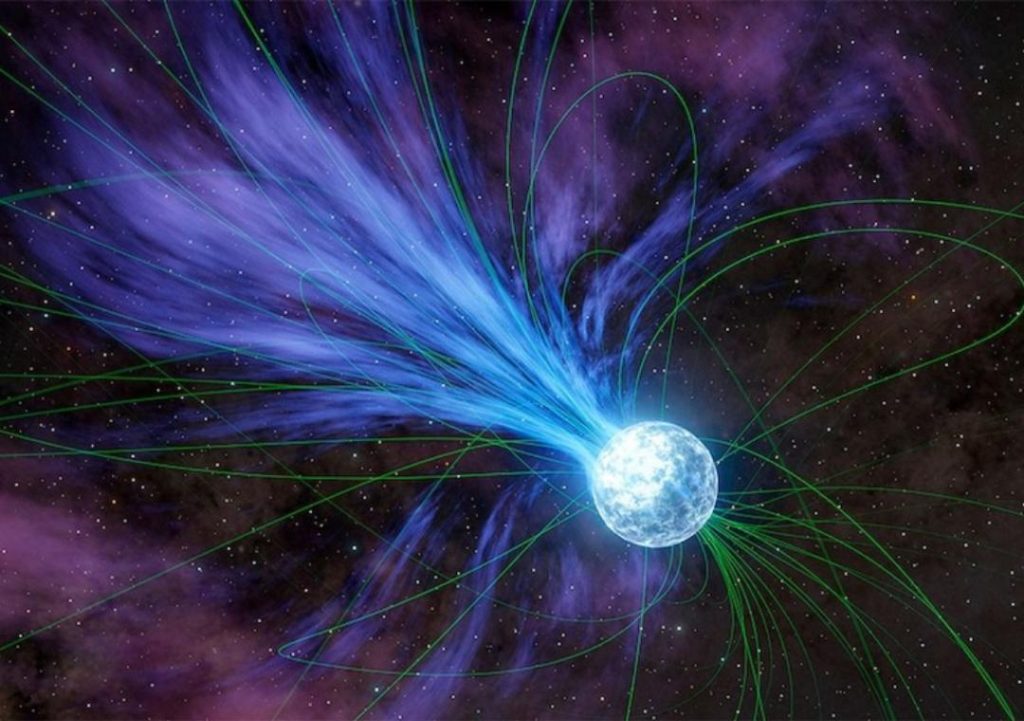
Gold & Platinum Created through Neutron Stars’ Explosions: Study
For centuries, humans have been fascinated by the origins of precious metals like gold and platinum. Where did they come from? How were they formed? Scientists have long been searching for answers, and finally, a new study has shed light on the mysterious creation of these valuable elements.
According to a study led by Columbia University student Anirudh Patel, magnetars or highly magnetized neutron stars played a crucial role in creating elements like gold and platinum in a cosmic event over 20 years ago. These magnetars, which are incredibly powerful and magnetically charged, exploded and released flares that contained these precious metals.
The study, which was published in the journal Nature Astronomy, suggests that these explosions, known as supernovae, are responsible for creating many of the heavy elements found on Earth, including gold and platinum. But how do they do it?
The Process of Element Creation
Neutron stars, which are the remnants of massive stars that have exploded as supernovas, are incredibly dense objects with incredibly strong magnetic fields. When a magnetar explodes, it releases a massive amount of energy in the form of radiation and particles, including neutrons.
These neutrons then collide with other particles in the explosion, causing them to merge and form heavier elements. This process, known as rapid neutron capture or r-process nucleosynthesis, is responsible for creating many of the heavy elements in the universe, including gold and platinum.
The Frequency of Magnetar Explosions
But how often do these magnetar explosions occur? According to the study, they happen approximately once per decade in the Milky Way galaxy, where we reside. However, in the observable universe, which is the part of the universe that we can see, magnetar explosions occur annually.
This means that there are many opportunities for magnetars to create heavy elements like gold and platinum through their explosions. In fact, scientists believe that many of the elements found on Earth, including gold and platinum, were created in this way.
The Impact of This Discovery
This discovery has significant implications for our understanding of the universe and the origins of precious metals. For centuries, humans have been searching for gold and platinum, often at great cost and risk. But now, we know that these elements were created in a cosmic event that occurred over 20 years ago.
This knowledge could potentially be used to locate areas of the universe where gold and platinum are more likely to be found. It could also help us better understand the processes that occur in the universe and how they shape the elements that we find on Earth.
The Future of Element Creation Research
This study is just the beginning of our understanding of element creation in the universe. Scientists are eager to continue researching this topic and uncovering the secrets of how precious metals like gold and platinum were created.
In fact, NASA is already planning to launch a new telescope in the coming years that will allow scientists to study magnetars and their explosions in greater detail. This telescope will be capable of detecting the radiation and particles emitted by magnetars and will provide scientists with a wealth of new data to analyze.
Conclusion
In conclusion, the study led by Columbia University student Anirudh Patel has shed new light on the origins of precious metals like gold and platinum. Magnetars or highly magnetized neutron stars played a crucial role in creating these elements in a cosmic event over 20 years ago.
This discovery has significant implications for our understanding of the universe and the origins of precious metals. It could potentially be used to locate areas of the universe where gold and platinum are more likely to be found and could help us better understand the processes that occur in the universe and how they shape the elements that we find on Earth.






